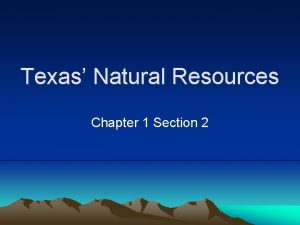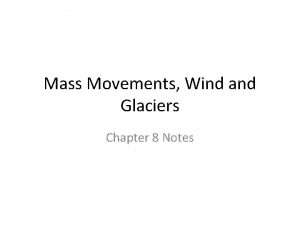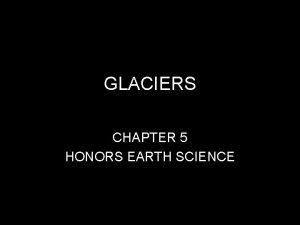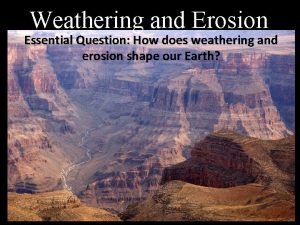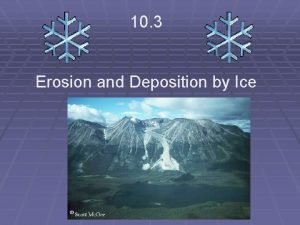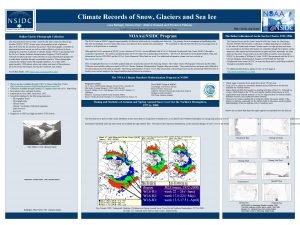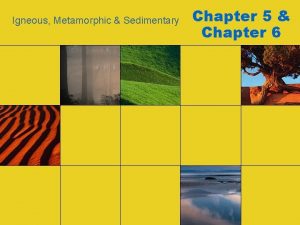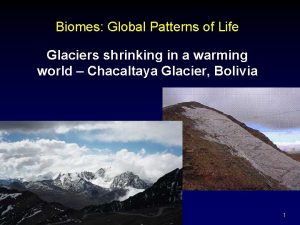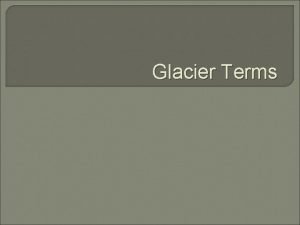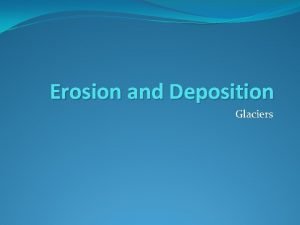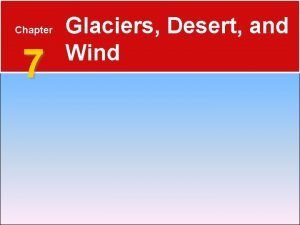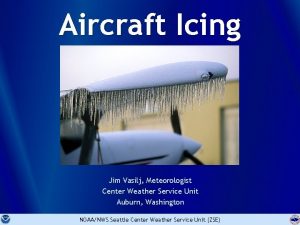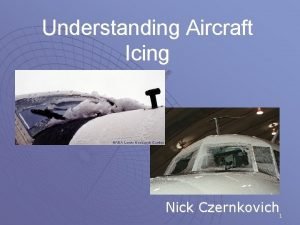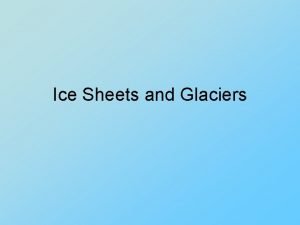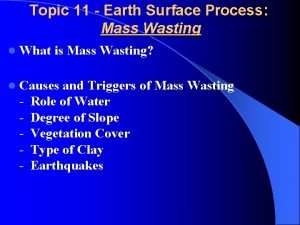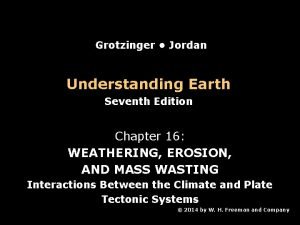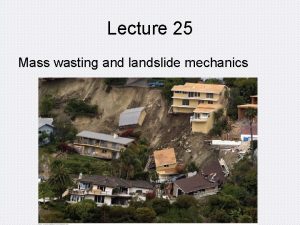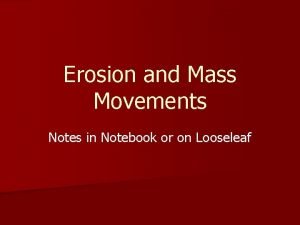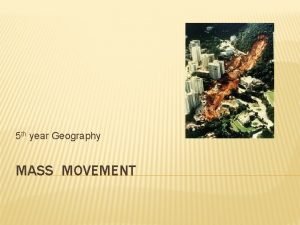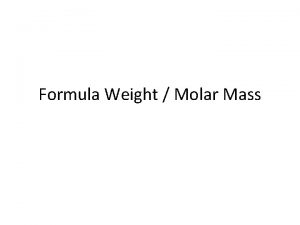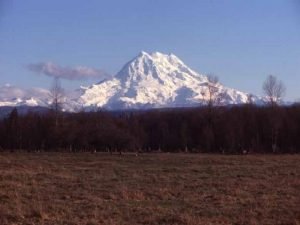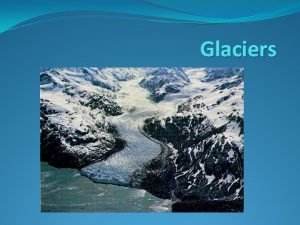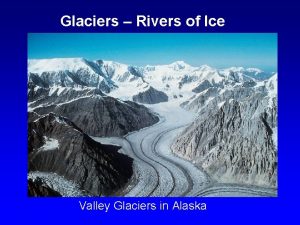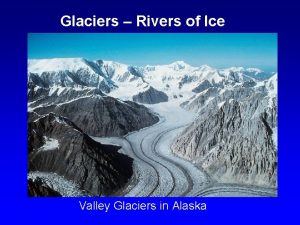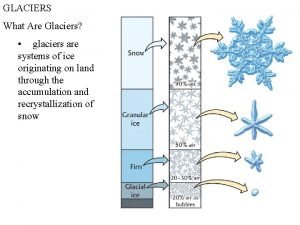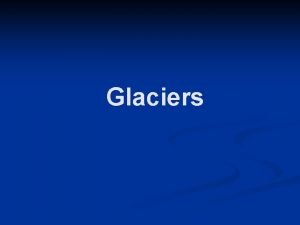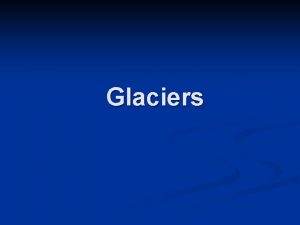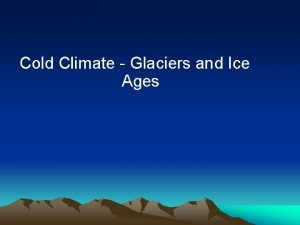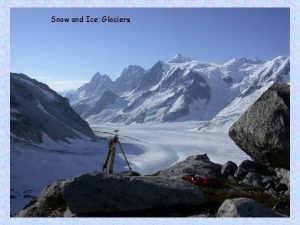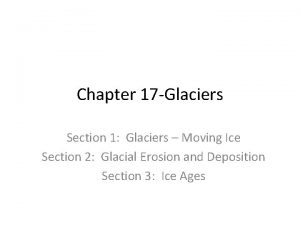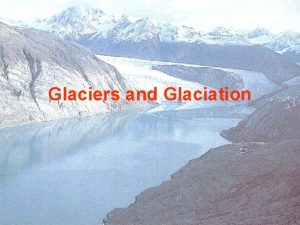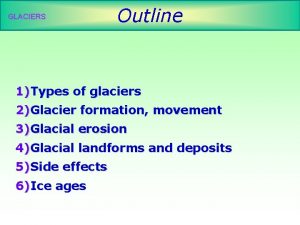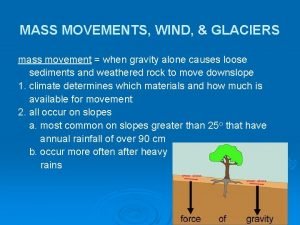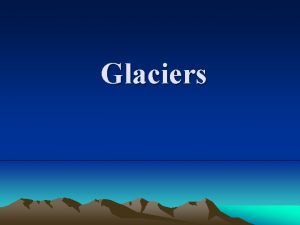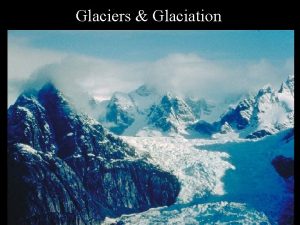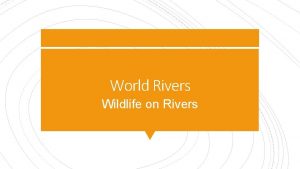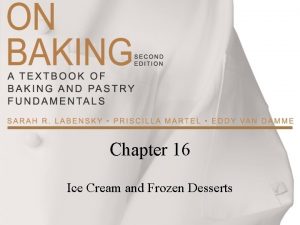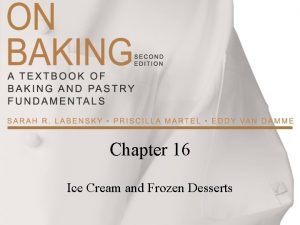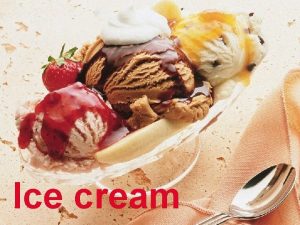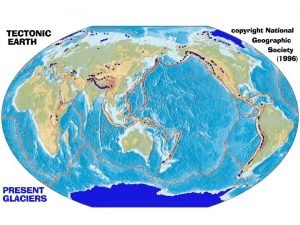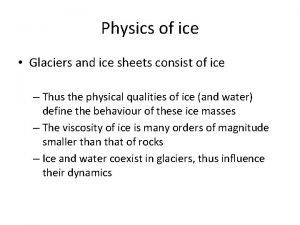glaciers RIVERS OF ICE Mass movement of frozen
























- Slides: 24

glaciers

“RIVERS OF ICE” • Mass movement of frozen ice on land • Form at high elevations or high altitude • Last extension of ice here began 20, 000 years ago and receded about 10, 000 years ago. • Today only covers 10% of land surface

Ice Flow • Glaciers are not static they are dynamic Formation: • A steady accumulation of snow piles up and compresses layers beneath – these compressed layers turn into ice • Force of gravity continuously pulls ice downward Movement: • Fastest ice is found on the surface at center of valley • Rate varies from a few cm to meters per day.

There are 3 Categories of Glaciers 1. Valley (Alpine) Glaciers • found in mountainous regions • high altitudes • Ex. Alps (New Zealand Europe), Rockies

Valley or Alpine Glacier

Ice Sheets (Continental Glaciers) • Much larger • Flow direction is • from an area of thick ice to thin ice Ex. Greenland, Antarctica

3. Tidewater Glacier • Flow far enough • to reach out into the ocean Create icebergs

Snow calving

Glacial Retreat


Budget of a Glacier • Glacier accummulation = snow adds to the • • weight of a glacier Glacier Wastage (ablation) = melting and calving. When accummulation is greater than wastage = glacier advances When accummulation is less than wastage = glacier retreats If accummulation = Wastage = glacier remains stationary

Glacial Erosion – Two Key Methods Plucking and Abrasion • Features of Glacial Erosion: • U-shaped valleys, sharp ridges (Aretes), pyramid peaks (Horns), water-filled valleys (Fjiords), and bowl shaped valleys (Cirques.

Glacial Erosion

Striations and Grooves

Depositional Features of Glaciers aka Glacial Dump • Drift = any sediment deposited by moving ice 2 Types: 1. Stratified Drift = well-sorted sediments deposited by streams (meltwater) 2. Till = unsorted sediment, deposited by moving ice

Deposits of Till lateral moraines form along valley walls • キ medial moraines form where 2 lateral moraines meet • キ end moraine left at terminus of glacier where it retreats • キ

Drumlins • A drumlin is tear-shaped ridge showing direction of ice flow

Drumlins

Glacial Erratics • Compositon of the deposit is different from the bedrock below

Deposits of Stratified Drift • Kame : a small hill forms where sediments accumulate beneath ice. Esker: forms from under-glacial streams Kettle: a depression that can be waterfilled

Kames

Eskers • One of many eskers running across the northwest of Canada

Muir Glacier 1941 and 2004

Massive melting – Holgate glacier, Alaska 1909 and 2004
 Why are some rivers in texas called “wrong way” rivers?
Why are some rivers in texas called “wrong way” rivers? Chapter 8 mass movements wind and glaciers
Chapter 8 mass movements wind and glaciers Moraine
Moraine Glaciers cause erosion by abrasion and
Glaciers cause erosion by abrasion and How can a glacier deposit both sorted and unsorted material
How can a glacier deposit both sorted and unsorted material Nsidc glaciers
Nsidc glaciers Continental divide minnesota
Continental divide minnesota Landslides moving water wind and glaciers cause
Landslides moving water wind and glaciers cause Bolivia glaciers
Bolivia glaciers U shaped valley
U shaped valley Continental glacier
Continental glacier Chapter 7 glaciers deserts and wind
Chapter 7 glaciers deserts and wind Clear ice vs rime ice
Clear ice vs rime ice Icing
Icing A perennial mass of ice which moves over land
A perennial mass of ice which moves over land Movement and non-movement area
Movement and non-movement area Locomotor and axial movements dance
Locomotor and axial movements dance Mass wasting
Mass wasting Frost wedging
Frost wedging Triggers of mass movement
Triggers of mass movement Mass movement
Mass movement Mass movement definition geography
Mass movement definition geography Does an iron nail gain mass or lose mass when it rusts
Does an iron nail gain mass or lose mass when it rusts Mass number formula
Mass number formula Convert grams to moles
Convert grams to moles
